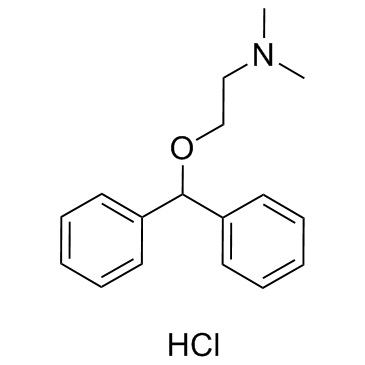| Structure | Name/CAS No. | Articles |
|---|---|---|
 |
Diphenhydramine Hydrochloride
CAS:147-24-0 |
|
 |
Cloperastine hydrochloride
CAS:14984-68-0 |